A journey to the breathtaking ancient citadel of Machu Picchu should be a once-in-a-lifetime experience, and timing is everything. But when is the best time to visit Machu Picchu? In this ultimate guide, we’ll uncover the secrets of Machu Picchu’s seasons and weather, the optimal months to visit, the perfect times of the day to explore, and tips for planning your trip. Prepare to embark on an unforgettable adventure in the mystical land of the Incas.
Short Summary
Machu Picchu and the Inca Trail experience three distinct seasons – dry season, wet season, and the shoulder season, each providing a unique experience for visitors.
April, May, September, and October are ideal for visiting Machu Picchu, offering beautiful weather conditions and few
people. June/July and August are the busiest months of the year but offer a combination of dry weather & lively atmosphere. November and December provide more space and occasional light showers,while January symbolizes the beginning of the wet season.
Planning ahead when visiting Machu Picchu is essential, including booking tickets & accommodations in advance. Also, packing essentials such as comfortable clothing and researching travel restrictions & safety protocols before embarking on your journey are key to experiencing Machu Picchu at its best.
Machu Picchu’s Seasons and Weather conditions
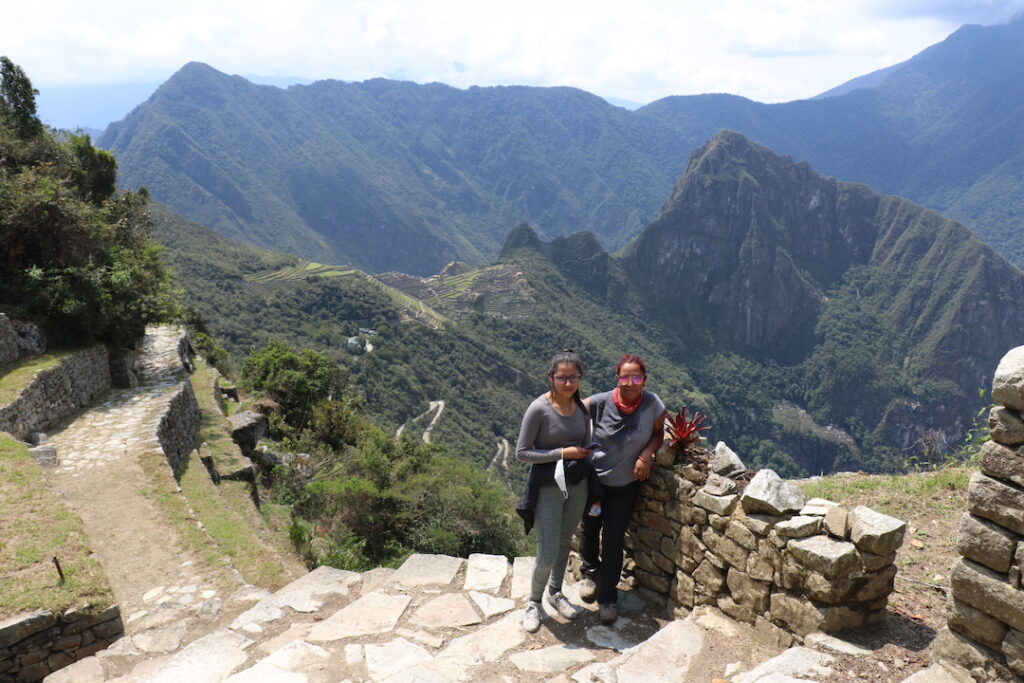
Machu Picchu, nestled in the heart of the Peruvian Andes, experiences three distinct seasons: dry season (June to August), rainy season (November-March), and shoulder season (April, May, September, October, and November).
Each season offers unique advantages for visiting Machu Picchu and enjoy the many hiking trails that will help you reach Machu Picchu such as the classic inca trail and the Salkantay trek, so let’s dive deeper and explore what each season has in store for you.
Dry Season (June, July and August)
From June to August, the dry season offers the most favorable weather conditions for trekking and sightseeing. With daytime temperatures ranging from 63 to 66°F (17°C -19°C), you’ll enjoy sunny days, clear skies, and cold nights, perfect for exploring Machu Picchu’s awe-inspiring landscape.
The dry season is also the peak tourist season, so be prepared for larger crowds, long lines at Machu Picchu and Aguas Calientes town but the stunning views and excellent trekking conditions are well worth it.
Rainy Season (December to March)
From November to March, Machu Picchu transforms into a lush paradise with vibrant, verdant scenery during the rainy season. The weather conditions become a bit harsh but the temperature remains between 66°F – 70°F (19 to 21°C), making it ideal for those who prefer a cooler climate.
Although you’ll encounter more rain, especially during the mornings or late afternoons, fewer visitors mean a more serene and peaceful experience when visiting the Machu Picchu citadel. The long lines of the dry season will be gone and, you’ll likely find great deals on flights and hotels during this low season.
Shoulder Season (April, May, September, October, and November)
The shoulder season, comprising April, May, September, October, and November, perfectly balances the rainy and dry seasons. During these months, you’ll encounter warm, sunny days with not so many people as during the peak season, making it an excellent time for a more relaxed visit.
The weather is temperate, with less rain, clearer days and blue skies, allowing you to enjoy Machu Picchu’s beauty without the rush. Most companies offer great discounts for all Machu Picchu tours during the shoulder season, particularly in November which is the beginning of the low season.
Best Months to Visit Machu Picchu and Hike the Inca trail
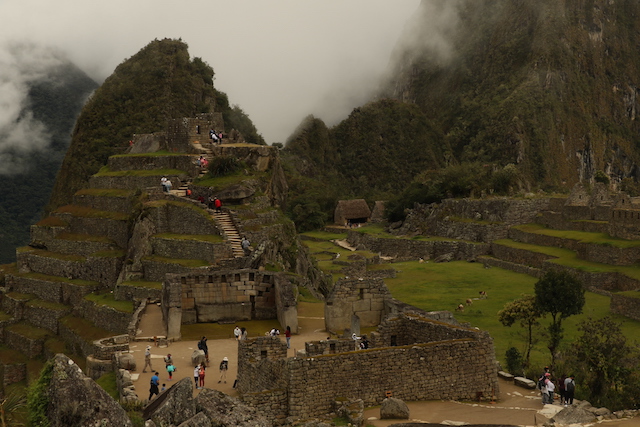
With a better understanding of Machu Picchu’s seasons, let’s explore the best months to visit this enchanting Inca citadel. Each month offers unique advantages, whether it’s cold weather with clear skies and stunning sunrises, dry weather and bustling crowds, or tranquil moments and warmer temperatures.
April and May
Visiting Machu Picchu in April and May is ideal for those who want to capture the perfect sunrise photo and enjoy the inca citadel. These months offer warmer temperatures, less rain and fewer chances of rain.
Experience the magic of Machu Picchu as the sun rises above the ancient incan citadel and illuminates the surrounding mountains, such as Huayna Picchu mountain, Huchuy Picchu, and the Sun gate creating an unforgettable memory.
June and July
June and July can be considered the busiest time of the year to explore Machu Picchu. During these peak season months, you’ll experience the best Machu Picchu weather, with cool nights and dry days with temperatures ranging from 50°F (10°C) in the morning to 70°F (20°C) in the afternoon.
Although these months are the busiest time of the year to visit Machu Picchu, the increased crowds add a vibrant energy to this magnificent site. However, it is important to know that traveling to Machu Picchu during the American Independence day holidays as well as Peru’s independence day can be extremely crowded. So, my advice is to skip those dates if possible or book your entrance tickets ahead of time so you can at least have a chance to enter Machu Picchu.
Furthermore, the peak season makes it difficult to find good hotels and book train tickets if you are traveling without booking arrangements or the help of a tour operator. Check bus and train schedules ahead of time so you don’t miss your chance to visit Machu Picchu.
Moreover, If you find yourself unable to purchase a Machu Picchu entrance ticket, you can still buy them at Aguas calientes or Machu Picchu pueblo if you manage to make it there. Since 2022, a ticket office has been opened there so people are not left out from having a chance to visit Machu Picchu during the high season.
August
For those who prefer a more peaceful experience, far from the madness of June and July, the busiest months of the high season, August becomes the ideal month to visit Machu Picchu. During this month, crowds are thinner, and the hiking trails such as the Lares trek, the Inca Trail and the Salkantay Trek are quieter, allowing you to connect with the mystical energy of the ancient citadel. The Machu Picchu weather remains mild and sunny, with temperatures around 72°F (22°C) during the day and 41°F (5°C) at night.
September, October and November
October and November offer the pleasant climate and warmth of the shoulder season, with temperatures ranging from highs of 73°F (22°C) to lows of 39°F (4°C). These months are perfect for hiking tours those who want to enjoy Machu Picchu’s beauty without the rush of the peak season.
With fewer visitors, you’ll have more space to explore the ancient ruins and connect with the powerful energy of this sacred site.
The best time to visit and hike Machu Picchu is during the shoulder season, which runs from september to November. During this time, the trails are in their best condition and the views are magnificent
Optimal Times of the Day to visit Machu Picchu
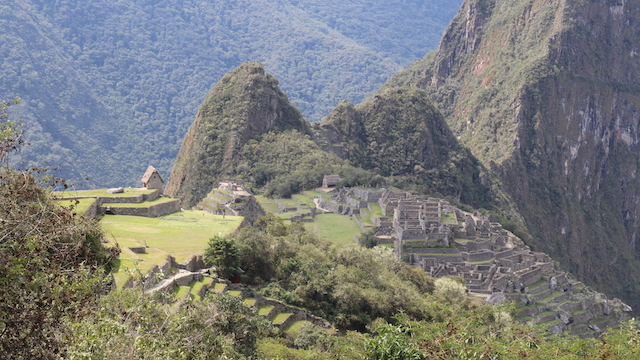
To make the most of your Machu Picchu visit, timing is crucial. The optimal times of day to explore this ancient citadel are during the mornings (6:00-10:00) and afternoons (after 2:00 pm).
These times allow you to avoid the crowds and fully immerse yourself in the mystical atmosphere of the Lost citadel of the Inca.
The best time of the day to visit Machu Picchu depends on how early or how late you want to explore this beautiful wonder of the world.
The early morning and afternoon hours are the best times to visit Machu Picchu. You can avoid crowds and take in the magical atmosphere of the ancient citadel.
Early Mornings (6:00-7:00)
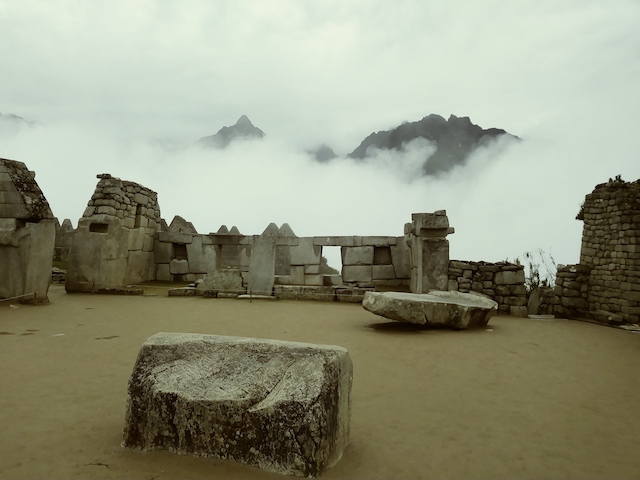
Visiting Machu Picchu in the early mornings is a magical experience. As the sun rises over the Andean peaks, it bathes the ancient ruins in a golden glow, creating a serene and tranquil atmosphere.
Arriving early also gives you the advantage of fewer crowds, allowing you to explore the site at a leisurely pace and soak in the breathtaking views. Just be sure to bring a jacket and sunscreen, as the mornings can be cool and the sun strong.
Afternoons (after 2:00 pm)
If you prefer a more relaxed visit, exploring Machu Picchu in the afternoons is a fantastic option. During this time, the crowds begin to thin out, allowing you to wander the ancient pathways in peace.
The afternoon light also provides improved illumination for photography, as the sun’s lower position in the sky casts enchanting shadows across the ruins. Additionally, the weather tends to be more pleasant in the afternoons, with cooler temperatures and a reduced chance of rain, especially during the dry season.
Hiking the Inca Trail: Timing and Considerations
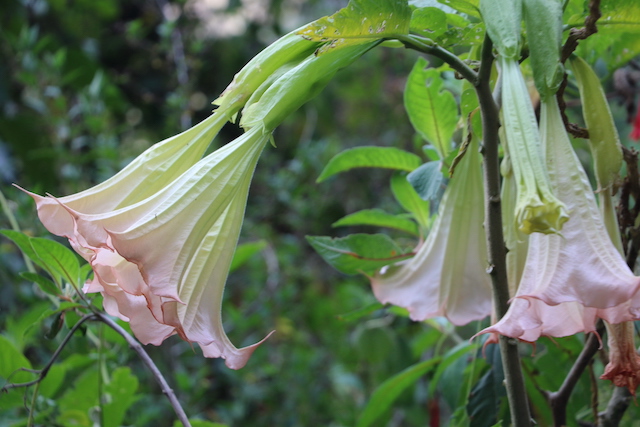
Hiking the Inca Trail is an unforgettable experience, but timing is crucial to make the most of this incredible journey. The ideal months for hiking the trail are from Early April to end of November. March and December can still be considered part of the rainy season and a bit rainy to visit Machu Picchu or hike the Inca Trail, but don’t worry if you’re planning to visit during the February closure of the Inca trail.
There are alternative treks available to suit your needs.
Inca Trail Closure in February
The Inca Trail is closed for maintenance, conservation, cleaning, and drainage works during the entire month of February which is the peak of the rainy season. This annual closure ensures that the trail remains in top condition for the thousands of hikers who embark on this iconic trek each year-round.
If you plan to visit Machu Picchu in February, don’t despair – other options are available for exploring the region during the rainy season.
Alternative Treks to Machu Picchu during the Rainy Season
Suppose you’re visiting Machu Picchu during the Inca Trail closure in February. In that case, you can still experience the magic of the Andes by embarking on alternative treks, such as the Huchuy Qosqo trail and Lares trek. These treks can still be hiked in February, the peak time of the rainy season, and offer a different regional perspective, with stunning scenery and unique cultural experiences.
You’ll still be able to visit the ancient citadel of Machu Picchu at the end of your journey, ensuring a once-in-a-lifetime adventure.
Ideal Months for Hiking
The most favorable months for hiking the Inca Trail are April, May, September, and October. During these months, you’ll enjoy pleasant weather and fewer crowds, allowing you to fully immerse yourself in the trail’s breathtaking landscapes and ancient history.
The dry season months, that s June, July and August also offer great views and amazing clue skies but the competition to obtain permits for these months becomes hard.
Whether you’re an experienced hiker or a first-timer, the Inca Trail offers an adventure that will leave you with memories to last a lifetime.
Tips for Planning Your Machu Picchu Visit
To ensure a smooth and memorable visit to Machu Picchu, it’s essential to plan ahead. This includes booking tickets and accommodations in advance, packing the right essentials for your trip, and exploring nearby attractions to make the most of your time in this magical region.
From the Sacred Valley to the Inca Trail, there are plenty of opportunities to explore the area and take in the stunning views. Make sure to research the best routes and attractions to visit.
Booking Tickets and Accommodations for the Inca trail and Machu Picchu

To secure your spot at Machu Picchu, it’s crucial to book tickets and accommodations in advance. The most efficient way to book tickets is to visit the official Machu Picchu tickets ticket site at www.machupicchu.gob.pe. Make sure you book your tickets at least six months ahead, especially if you itnend to climb Huayna Picchu and Machu Picchu mountain
For accommodations, there are numerous highly-rated hotels in Cusco and Aguas Calientes, with options ranging from budget to luxury. Booking ahead of time will ensure the best schedules and prices during your visit, especially during the busiest months of the dry season.
Packing Essentials
When packing your for your Machu Picchu adventure, it’s essential to include items such as comfortable walking shoes, trekking pants, leggings or fitness/yoga pants, a hat or cap for sun protection, waterproof footwear, rain gear such as a poncho or rain jacket, sunscreen, insect repellent, a camera, and a small personal day bag.
Also, consider bringing wool or moisture-wicking socks and exercise tanks. Remember that tripods, selfie sticks, backpacks, and bags exceeding 5 kilos in weight are not permitted.
Exploring Nearby Attractions
While visiting Machu Picchu, don’t miss the opportunity to explore nearby attractions such as Cusco’s Plaza De Armas, Qorikancha, and Sacsayhuaman.
Additionally, consider hiking up to Wayna Picchu and Machu Picchu mountains for even more breathtaking views of the ancient citadel and surrounding landscapes. These nearby attractions will enrich your Machu Picchu experience and create even more cherished memories. If you are visiting Peru for more than 10 days, then you should consider exploring other parts of Peru such as lake Titicaca or the Colca Canyon. You will get more costumed to the altitude by exploring those places before your Inca Trail adventure.
Travel Restrictions and Safety Protocols
When planning your trip to Machu Picchu, it’s important to be aware of the current travel restrictions and safety protocols in place for Peru. This includes entry requirements, health and safety measures, and COVID-19 updates that may impact your travel plans.
Entry Requirements
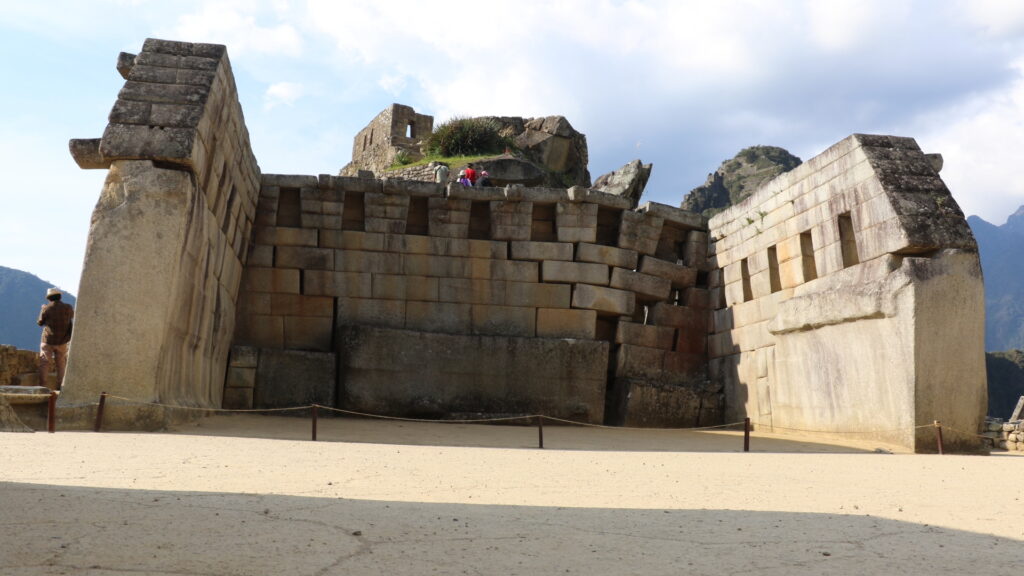
The entry requirements for Peru may differ based on your country of origin. It’s essential to consult your local government for the most current information regarding visa requirements, vaccinations, and other necessary documentation.
Staying informed and prepared will ensure a smooth and hassle-free entry into Peru, allowing you to focus on enjoying your Machu Picchu adventure.
Health and Safety Measures before visiting Machu picchu
The Peruvian government has implemented a range of health and safety measures to protect visitors, such as wearing face masks in public, adhering to social distancing protocols, and following hygiene guidelines. These measures are in place to ensure the safety and well-being of both visitors and locals, so it’s important to comply with these guidelines during your visit.
By taking these precautions, you can focus on experiencing the magic of Machu Picchu with peace of mind.
Summary
In conclusion, timing is crucial when planning your visit to the awe-inspiring ancient citadel of Machu Picchu. By understanding the different seasons, choosing the best months and times of day to visit, and planning your trip with care, you can make the most of your once-in-a-lifetime adventure. So pack your bags, book your tickets, and prepare to embark on a journey through time as you explore the mystical land of the Incas.
Frequently Asked Questions
What are the best and worst times to visit Machu Picchu?
The best time to visit Machu Picchu and hike the Inca Trail is from late March to May and from September to mid-December, which are the months in between the dry and rainy seasons, when the weather is excellent and crowds are fewer.
However, the dry season from June to August can also be are great, but may be crowded.
What is the best month to go to Peru?
For the best travel experience in Peru, plan your trip for the dry winter months from May to September. This is especially recommended for those looking to explore Cusco and Machu Picchu as the weather during wet season will be most favorable for these activities.
However, if you prefer a pleasant climate and warmer temperatures, visit during the summer from December to March, despite the higher chance of rain.
How many days do you need at Machu Picchu?
To get the most out of Machu Picchu, I’d suggest you spend at least three days exploring this ancient Incan site. This will give you enough time to properly appreciate the ruins and its breathtaking views as well as take day trips to the surrounding area.
With additional travel time, you can extend your stay further to explore other parts of Peru.





Trackbacks/Pingbacks